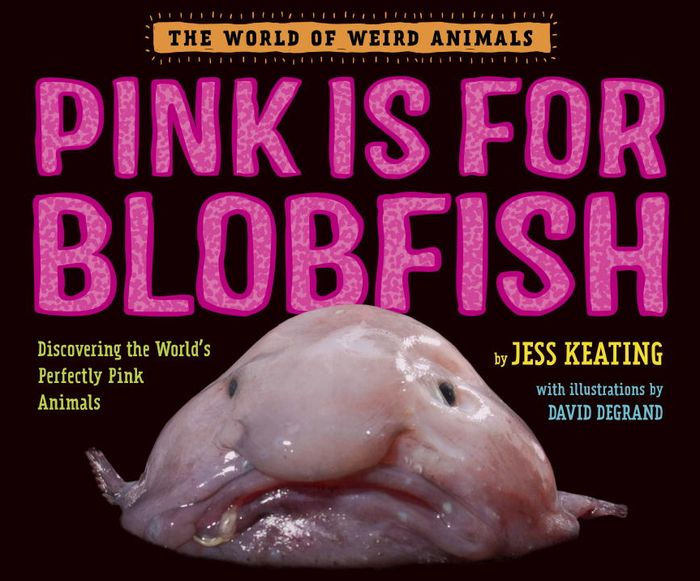TITLE: Pink is for Blobfish: Discovering the World’s
Perfectly Pink Animals
AUTHOR: Jess Keating
PUBLISHER: Alfred
A. Knopf
COPYRIGHT DATE: 2016
AGE RANGE: 7-11
years
LEXILE LEVEL: NC1040L
ACCELERATED READER:
1.0 point
SUMMARY:
If you think pink is
only for bubblegum and princess dresses—it’s time to rethink pink. Pink
is for blobfish and pygmy seahorses and naked mole rats and hairy squat
lobsters. Pink is used to camouflage predators and prey. Pink is also used to draw attention to itself.
This book is also full of interesting animal facts, such as: “If a (pink)
sea star comes across prey that is too big to fit in its mouth, it will
stick its stomach out through its mouth, wrap it around its meal,
digest it, and then draw the goopy, digested mass back into its body.” (p 23)
CRITIQUE:
Great photos! This book was a great mix of animal facts
and humor.
REVIEW:
Kirkus states, “These texts will
challenge the intended audience. They’re full of interesting but likely
unfamiliar terms: carrion, deforestation, eusocial, negative phototaxis. These
are printed in boldface in the text and defined in context and in a glossary.
There are helpful suggestions for further research... An intriguing approach for animal-fact enthusiasts.” (Kirkus, 2015, Nov. 15)
AWARDS:
- “A Monarch Award Nominee (2018, Illinois)
- School Library Journal’s ‘Fuse Eight’ Best Science and
Nature Book (2016)
- A Wisconsin State Reading List Committee Favorite
(2017)
- An Amazon ‘Best Book of the Year so far’ Pick (2016)” (Keating, J. n.d.
RELATED MATERIAL:
Guiberson, B. Z. (2015). The Most Amazing Creature in
the Sea. New York: Henry Holt and
Company.
This book is sure to amaze young
readers with its strange facts about ocean creatures. It reiterates the
fact that there are still so many creatures of the deep of which we have no
knowledge…yet. Sure to
tantalize the curiosity of young inquisitive minds.
Roy, K. (2014). Neighborhood Sharks: Hunting with the Great Whites of California’s Farallon Islands. New York: David Macaulay Studio, Roaring Brook Press.
For
more information about oceanic animals, read Neighborhood Sharks. This
nonfiction book takes an in-depth look at the body mechanics of the Great White
Shark as it hunts its favorite meal: seals.
Nivola, C. A. (2012). Life in the Ocean: The Story
of Oceanographer Sylvia Earle. New York: Frances Foster Books, Farrar Straus
Giroux.
For young
readers curious about studying ocean life, read about Sylvia Earle, who began
her life of studying the ocean when she was a child living near its coast.
REFERENCES:
Keating,
J. (n.d.). Jess Keating: Author - Zoologist - Bookdragon. Retrieved from
https://jesskeating.com/praise/
Kirkus
Review. (2015, November 15). Pink is for Blobfish: Discovering the World’s
Perfectly Pink Animals. Retrieved from
https://www.kirkusreviews.com/book-reviews/jess-keating/pink-is-for-blobfish/







